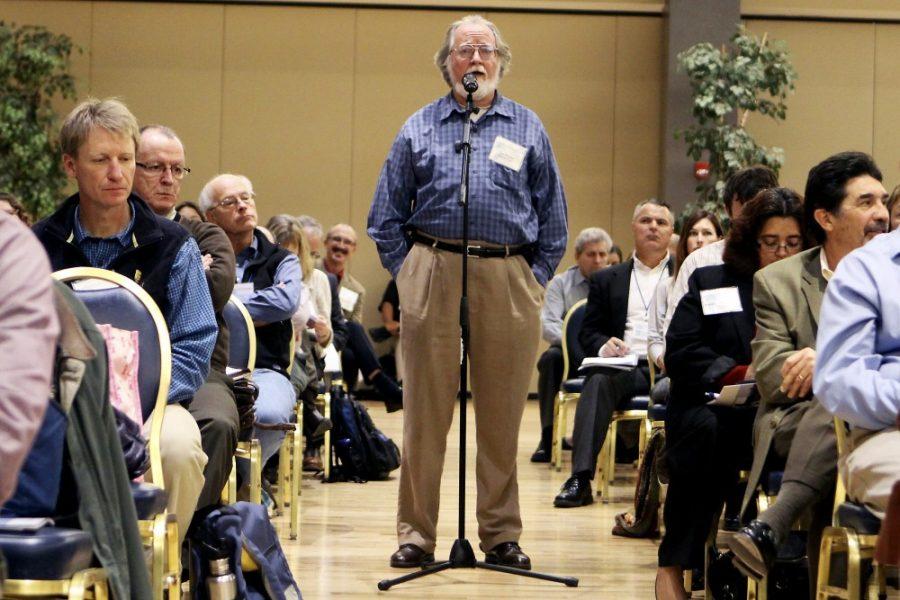The UA’s Water Resources Research Center held its annual conference on Tuesday to discuss the present and future state of Arizona’s water issues.
The all-day conference held in the Student Union Memorial Center Grand Ballroom addressed how to more effectively use the water coming into Arizona. Speakers at the event included Grady Gammage Jr., Arizona State University’s senior research fellow at the Morrison Institute for Public Policy; Michael Lacey, deputy director of the Arizona Department of Water Resources; and David Rousseau, board president of the Salt River Project.
Gammage said the main issues discussed at the conference regarded the choices people make with the water they already have, how not to continue population growth with the little water they receive and more long-term plans for what to do with their water over the next 40 to 100 years.
Joseph Garcia, director of communications at ASU’s Morrison Institute for Public Policy, said the issue right now is not if we have enough water, but where the water we already have is going. He said about 70 percent of water in Arizona goes to agriculture. The rest of it goes to industries and mining, recreational urbanization or landscape use.
What Arizona needs now is the foresight and the initiative to do what the producers of the Central Arizona Project did when the project was first initialized, he said.
“We are not running out of water,” Gammage said, “but we can’t do everything forever. We can’t support continued population growth, and also support agriculture, and also support the environment.”
Arizona is allotted about 2.8 million acre feet per year from the Colorado River. Because Arizona doesn’t currently use all of its allotted water, it ends up just being dumped back into the environment, Gammage said.
“It depends on what ‘use’ means. If you believe that leaving water in the natural environment is a use, which lots of people don’t, then we are using it all even though some is left in the natural environment.”
According to Gammage’s report, the population over the next 40 years will grow by 25 million or more, leading to an increase in water demand to about 5 million acre feet of water per year.









